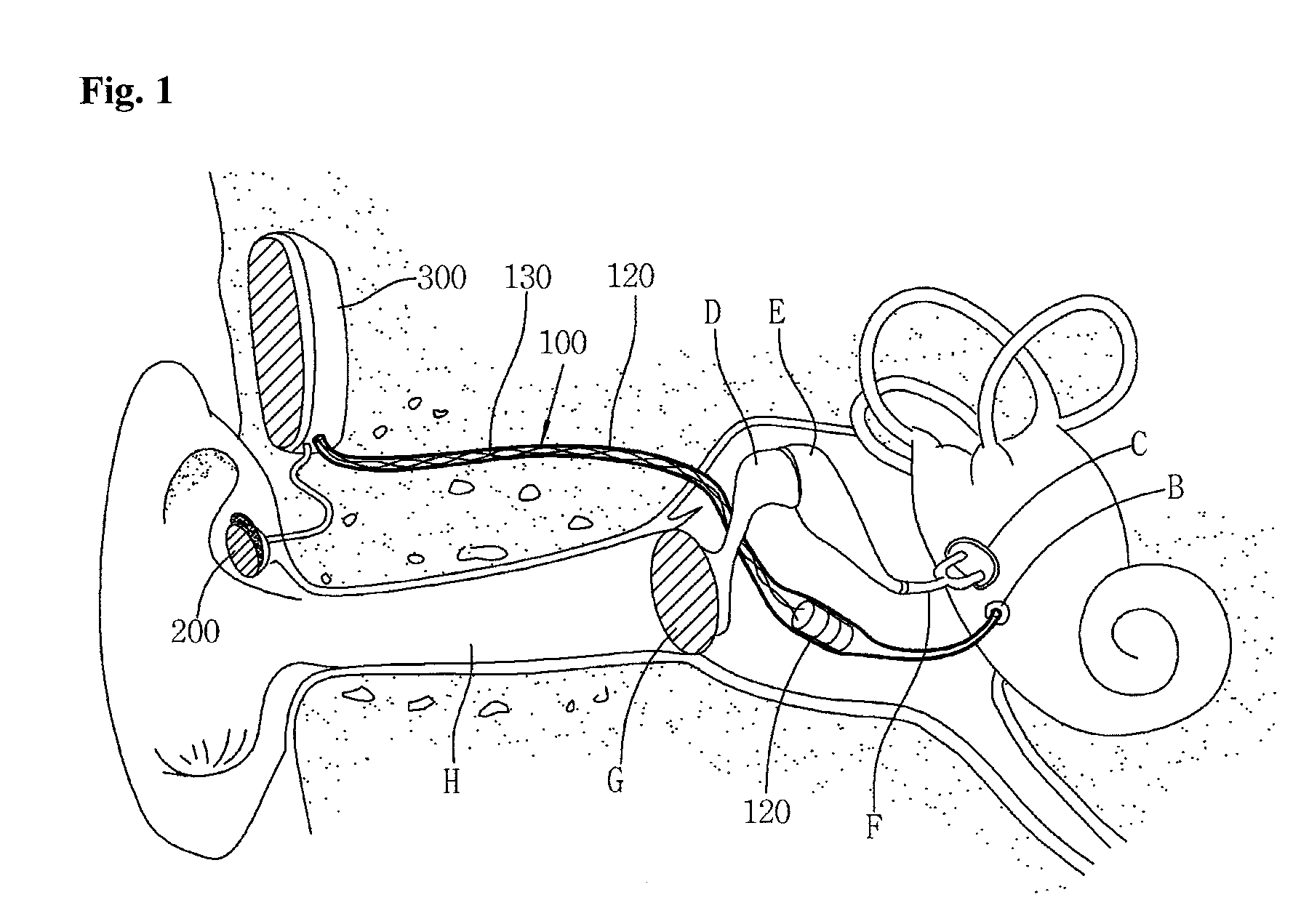Implantable middle ear hearing device having tubular vibration transducer to drive round window
a technology of tubular vibration and hearing device, which is applied in the field of implantable middle ear hearing device having tubular vibration transducer to drive a round window, can solve the problems of complicated and time-consuming operation of piezoelectric transducer inside the middle ear cavity, make people uncomfortable before they are used to the inserted device, etc., and achieves the effect of high efficiency sound delivery and easy hearing loss compensation
- Summary
- Abstract
- Description
- Claims
- Application Information
AI Technical Summary
Benefits of technology
Problems solved by technology
Method used
Image
Examples
Embodiment Construction
[0056]Hereinafter, an implantable middle ear hearing device having a tubular vibration transducer to vibrate a round window according to the present invention will be described more fully with reference to the accompanying drawings, in which exemplary embodiments thereof are shown.
[0057]Of the accompanying drawings, FIG. 1 illustrates the structure and operation principle of an implantable middle ear hearing device having a tubular vibration transducer to vibrate a round window according to an embodiment of the present invention.
[0058]Firstly, the basic structure of the implantable middle ear hearing device according to an embodiment of the present invention will be described with reference to FIG. 1.
[0059]The implantable middle ear hearing device 100 of this embodiment includes a tubular member 110, a vibrating unit 120 and signal cords 130. The hearing device 100 cooperates with a microphone 200, which is attached to an ear of a user in order to detect sound from outside, and a si...
PUM
 Login to View More
Login to View More Abstract
Description
Claims
Application Information
 Login to View More
Login to View More - R&D
- Intellectual Property
- Life Sciences
- Materials
- Tech Scout
- Unparalleled Data Quality
- Higher Quality Content
- 60% Fewer Hallucinations
Browse by: Latest US Patents, China's latest patents, Technical Efficacy Thesaurus, Application Domain, Technology Topic, Popular Technical Reports.
© 2025 PatSnap. All rights reserved.Legal|Privacy policy|Modern Slavery Act Transparency Statement|Sitemap|About US| Contact US: help@patsnap.com



